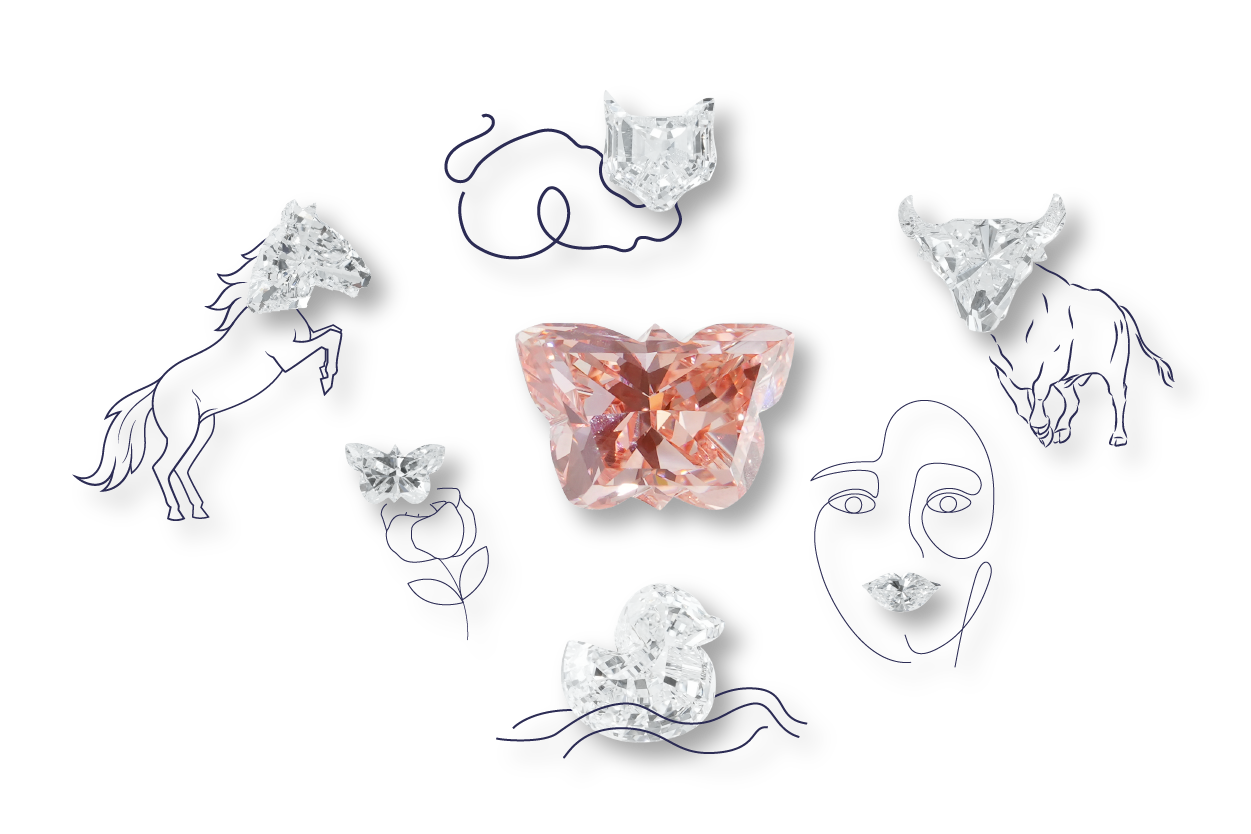Lab diamond vs Simulant diamond

Learn the fascinating world of diamond alternatives with our guide to lab-grown diamonds, cubic zirconia, and moissanite. Discover the differences in durability, look, and pricing that identify different stones. Learn about their distinct production techniques and how they match in terms of brilliance and value. Whether you're looking for sustainable jewelry alternatives or an economical engagement ring, this guide will help you make a smart choice.
Table of contents
- Simulant diamonds and lab grown diamonds difference
- History of cubic zirconia
- Cubic zirconia making process
- How moissanite is made
- How lab grown diamonds made
- How moissanite differ from lab diamond
- Moissanite harder than a lab diamond
- Moissanite and cubic zirconia cheaper than a lab diamond
- Conclusion
- FAQs
-
Simulant diamonds and Lab-grown diamonds difference
Simulant diamonds are different from lab-grown diamonds in the form of durability, appearance, and price. Simulant diamonds like cubic zirconia and moissanite have more sparkle effects. While lab grown diamonds carries less sparkling effects, but it's durability is better than the simulant diamonds. It's a difference between simulant diamond and lab-grown diamonds.
A. Durability Of Simulant and Lab grown diamonds
Lab grown diamonds have more durability scaled on the 100% score for havin the carbon element. Instead of growing in the laboratory, lab diamonds carries 10/10 score on the Mohs scale. Simulant diamonds not carrying the durability and their score between 8.5- 9.25 on the Mohs scale.
B. Sparkle reflections of Simulant and Lab diamonds
Lab grown diamonds is the form of carbon element which is the hardest ingredients on the earth. Thus, sometimes lab grown diamonds absorbs more heat in the anatomies which turns into the less sparkle. Simulant diamonds are made with silicon carbide and zirconium oxide, these elements already have shining appearance from the original form. That's why simulant diamond has more sparkling reflections.
C. Price bifurcation of Simulant and Lab diamonds
Simulant diamonds sell at 50-90% less price than lab-grown diamonds prices. For simulant diamond's cheap price, the making process and raw materials constant supply with its making time are responsible. Lab-grown diamond-making and polishing process demand expertise and skill, so the price of lab diamonds is higher than the simulant diamonds.
D. Making process of Simulant and Lab grown diamonds
Simulant diamonds are made in less time and consumption of energies such as water, electricity, and human resources. Lab diamonds demand more skill to grow and used more water and electricity.
Simulant diamonds are made in the laboratory, but in their making, zirconium oxide and silicon carbide are used. Moissanite is made with silicon carbide, and cubic zirconia is made in zirconium oxide. Lab-grown diamonds are made in the total form of carbon there is no chemical used to make them more shinier and glorious.
E. 4Cs Of Lab diamonds and Simulant diamonds
Lab diamonds carries the 4cs as cut, clarity, color, and carat for their structures. Moissanite has also 4cs of diamonds but it's not approved from the authorized institutions as GIA. Cubic zirconia doesn't carries the 4cs as diamonds. 4cs of diamonds are exactly available in the lab grown diamonds.
F. Symmetry Scales on Lab diamonds and Simulant diamonds
Symmetry is the faceting lines on the diamond anatomy. Lab grown diamond has diamond symmetry on all the anatomies. While simulant diamonds as Moissanite and Cubic Zirconia also have a symmetry but not at that level as diamond symmetry.
-
History of cubic zirconia
So, in 1977 the cubic zirconia's giant production was started by a soviet union scientist in Moscow, Russia. They found the unique structure of cubic zirconia, a part of simulant diamonds. Natural cubic zirconia has a rare foundation, but artificial cubic zirconia is readily available on the market.
-
How is cubic zirconia made?
In the making of cubic zirconia, the metallic chip is placed under the high pressured chamber. After the zirconium oxide powder was added to the chips at 5000 degrees Celsius temperature, then the chip started to take shape as a rough natural diamond.
After bearing a high leveled temperature, the cubic zirconia crystal is placed under the cooling systems. After the crystal cools, it is ready for cutting and polishing as usual. And the cubic zirconia is made.
The zirconia oxide power is melted at extremely severe heat. It shaped the diamond crystal. After the crystal is grown, it is sent to the polishing process and cutting process.
The cubic zirconia crystal is placed on the diamond grading wheel, which is constantly moving around. Crafter placed the seed on the grading wheel as per shape requirements and proportions.

A cooling water system has helped metallic chips to take particular shapes. So, the melt substance is released for 8-10 hours at its high-temperature level. Also, radio frequency helps the metallic chips to glow with X-rays.
2. How is Moissanite made from the process?
In the moissanite-making process, a silicon powder is placed under the chamber with high heat and pressure. The powder automatically transforms into a surface called a seed. The seed turns into a Moissanite structure, and it is ready for polishing.
After the heat pressurizes the powder, it takes a form of a crystal which you can call a "Moissanite." After a seed is grown then, it is ready for cutting and polishing as "Moissanite." A Moissanite ring could be a cost-effective choice for engagement or wedding.
Moissanite is made with silicon powder made with computer chips, transistors, and solar cells, which is a more affordable option for manufacturers. They found these chips from electronic waste, and it's a good step to save our environment.

Moissanite making is still a good and appealing choice to protect our environment from the destruction of electronic waste. So, if you're searching for brilliant sparkling lights, you can go for a Moissanite due to its exquisite reflection.
For having the same appearance, Moissanite is known as a diamond alternative because all the variants of diamonds are available in Moissanite. That's why people understand Moissanite is a diamond, but it's not. There's no doubt to tell Moissanite, as a diamond alternative carries most elements of diamonds such as brilliance, scintillation, and fire.
-
How are lab-grown diamonds made?
Lab-grown diamonds made with diamond crystal seed. A crystal seed is placed under the chamber, which has temperature, the pressure of carbon, and other gases. While the seed is pressurized by the carbon, then it starts to take shape, and this crystal is known as a lab-grown diamond. In this way, Lab-grown diamonds are made.
Lab-grown diamonds made with HPHT and CVD process.
There are two types of making process of lab-grown diamonds:-
1. What is the CVD process in lab-grown diamonds?
In the CVD process, lab-grown diamonds made with the diamond seed are placed into a sealed chamber with full of methane and carbon gas at 800-1000°C heat. Then this extreme heat builds the plasma, which can help them build a diamond layer on the layer to take the shape of rough diamond. Now, it is ready for known polishing and cutting process to known as CVD Process.
2. What is the HPHT process for lab-grown diamonds?
In the HPHT process, the diamond seed is placed under the iron-framed mess. While the heat was pressurized from the upper and lower surface of the mess, then the seed took the growth. The swallowed seed is known as HPHT-grown Lab Diamonds.
-
How does moissanite differ from a lab-grown diamond?
Moissanite differs from lab-grown diamonds in sparkling refracting index, durability, variation, and price. Moissanite has a different milky or sparkly appearance than lab-grown diamonds. Lab-grown diamonds has more durability than Moissanite. Moissanite has a 10-20% price than the overall diamond price. This is the difference between moissanite and lab-grown diamonds.
Here you clearly show that moissanite does have much more sparkles than lab-grown diamonds. So, if you love sparkles and glitter, then moissanite is a good choice. While lab diamonds do not have any of these elements, which affect their structure and glittering.
In moissanite vs diamonds, the diamonds are the clear winner in durability, authentication, and trustworthiness. Diamonds are far better than moissanite because they have durability and appearance, and most importantly it's the birthstone of April month. Moissanite isn't a diamond, but it's an alternative for having the same appearance as a diamond.
Sometimes, Moissanite has a milky and white appearance for reflects brilliance. Also, moissanite has big appearance than the same weighted diamonds. Moissanite has fewer ideal color grades like G-J, but diamonds are available with all color grades(fancy colored diamonds).
-
Which is harder, Moissanite or a Diamond?
The lab-grown diamonds' score of hardness on the Mohs scale is 10 out of 10. While moissanite has a score of 9.25 out of 10. So, the clear winner is lab grown diamond because it has carbon elements. While moissanite is losing durability reason is the combination of silicon and carbon.
-
Is moissanite or cubic zirconia cheaper than lab grown diamonds?
Yes, moissanite or cubic zirconia(simulant diamond) has 97.31% and 90.08% cheaper price than lab grown diamonds. The reason of cheaper price for moissanite or cubic zirconia is the less manufacturing cost. The research shows simulant diamonds, which are known as moissanite and cubic zirconia, have cheap and affordable prices. Here below, look at the price comparison of lab-grown diamonds and simulants diamonds.
For a 1 carat simulant diamond(cubic zirconia and moissanite), you have to spend between $35 - $120. On another side, a 1 carat lab grown diamond has a $1300 price.

In this comparison, simulant diamond is a good choice ahead of lab grown diamonds. While lab grown diamond is very durable than simulant diamonds. So, if you are thinking of a long-lasting symbol of your love, then a lab grown diamond is the best choice.
Conclusion
Explore the fascinating world of diamond alternatives with this detailed guide on lab-grown diamonds, cubic zirconia, and moissanite. These solutions provide not only a sustainable and cost-effective option, but also a diverse range of styles perfect for all jewelry fans. Learn about their unique manufacturing processes, assess their durability, and consider the economic advantages. Whether you like the classic look of lab-grown diamonds or the remarkable sparkle of moissanite and cubic zirconia, each offers distinct benefits to modern customers. Choose these sustainable and cost-effective alternatives to conventional diamonds for a smart and fashionable addition to your jewelry collection.
FAQs
Q1. What difference lab-grown diamonds from their simulants, cubic zirconia and moissanite?
Ans.Lab-grown diamonds are real diamonds created in laboratory and have the same qualities as natural diamonds. Simulants like cubic zirconia and moissanite seem like diamonds, but they are composed of different materials and are less durable.
Q2. How are cubic zirconia and moissanite manufactured?
Ans. Cubic zirconia is created by heating zirconium dioxide to very high temperatures. Moissanite is created in a laboratory by heating and compressing silicon carbide to simulate natural diamond conditions.
Q3. What are the advantages of using lab-grown diamonds over simulants?
Ans. Lab-grown diamonds are real diamonds that are more environmentally friendly and cost-effective than mined ones. They provide the true diamond feel at less expense, but simulants are only suitable to use.
Q4. Can you quick identify between moissanite, cubic zirconia, and lab-grown diamonds?
Ans. Yes, given their similar look to diamonds, experts can differentiate between moissanite and cubic zirconia using specific tests based on variations in their physical and visual qualities.
Q5.Why do moissanite and cubic zirconia cost less than lab-grown diamonds?
Ans. Moissanite and cubic zirconia are cheaper to make than lab-grown diamonds. They use more commonly available materials, lower their cost and providing them an economical option for individuals who want the beauty of diamonds without the higher price.
Shop Lab diamond jewelry
Recent Posts
-
Every Month's Birthstone FAQs – Your Gemstone Guide
April 22, 2024 -
Explore the Magic of October Birthstones: Opal & Tourmaline
April 22, 2024 -
Exploring the Ruby Gemstone: July Birthstone
April 19, 2024 -
The Attraction of May Birthstone - Emerald
April 18, 2024 -
Beautiful Yellow Gold Engagement Rings
April 17, 2024 -
1 Carat Brilliant Cut Diamonds and Rings
April 15, 2024 -
Explore the Natural Beauty of March Birthstone: Aquamarine
April 13, 2024 -
Marquise Engagement Rings - A Complete Shopping Guide
April 3, 2024

 Brilliant Cut Rings
Brilliant Cut Rings
 Old Cut Rings
Old Cut Rings
 Colored Diamond Ring
Colored Diamond Ring
 Antique Diamond Ring
Antique Diamond Ring
 Salt & Pepper Ring
Salt & Pepper Ring
 Solitaire Rings
Solitaire Rings
 Halo Ring
Halo Ring
 Bridal Set
Bridal Set
 Solitaire Accent
Solitaire Accent
 Three Stone Ring
Three Stone Ring
 Semi Mount Ring
Semi Mount Ring
 Bezel Set
Bezel Set
 Pave Set
Pave Set
 Eternity Band
Eternity Band
 Channel Set
Channel Set
 Dainty Rings
Dainty Rings
 Toi Moi Rings
Toi Moi Rings
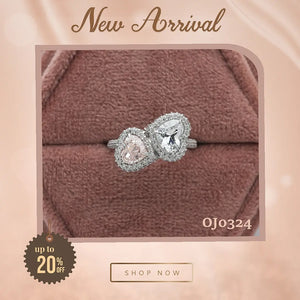
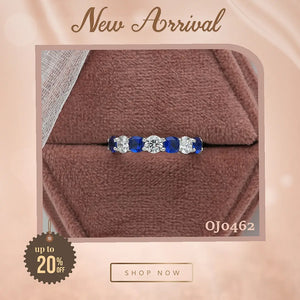
 Colored Diamond
Colored Diamond
 Old Cut Diamond
Old Cut Diamond
 Antique Shapes
Antique Shapes
 Diamond Layout
Diamond Layout
 Brilliant Cut
Brilliant Cut
 Certified Stone
Certified Stone
 Matching Pairs
Matching Pairs
 Gemstones
Gemstones
 Best Sellers
Best Sellers
 New Arrivals
New Arrivals


 Studs
Studs
 Drop & Dangle
Drop & Dangle
 Hoop Earrings
Hoop Earrings
 Pendants
Pendants
 Necklaces
Necklaces
 Birthday Special
Birthday Special
 Anniversary Special
Anniversary Special
 Bracelets
Bracelets
 Bangles
Bangles
 Chain
Chain
 Ring
Ring
 Bracelet
Bracelet
 100-299$
100-299$
 300-499$
300-499$
 500$ and More
500$ and More
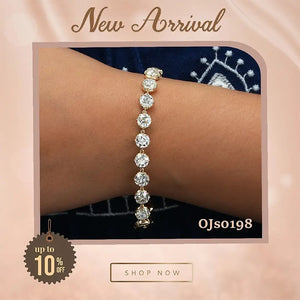
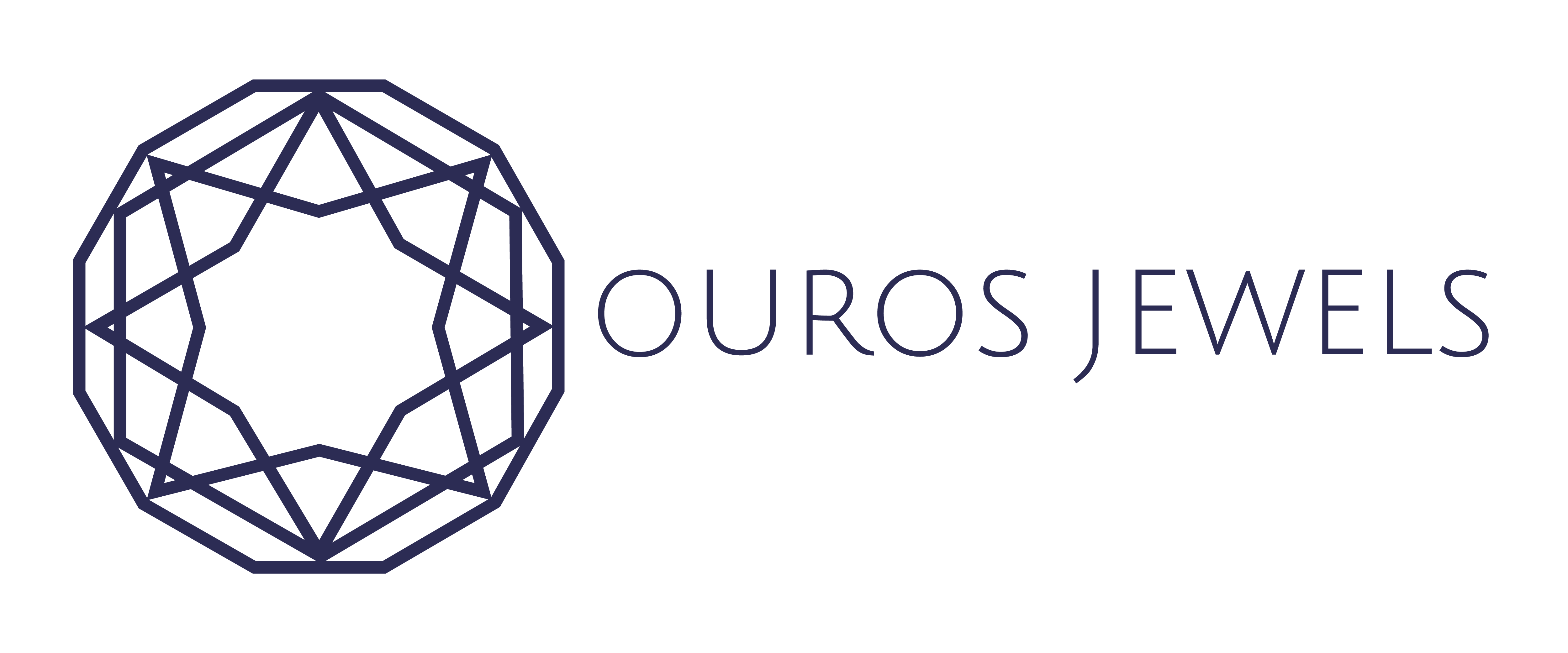
![[Every Months Birthstone FAQs New]-[ouros jewels]](http://www.ourosjewels.com/cdn/shop/articles/1_Every_Months_Birthstone_FAQs_New_small.webp?v=1713791642)
![[Explore the Magic of October Birthstones Opal and Tourmaline]-[ouros jewels]](http://www.ourosjewels.com/cdn/shop/articles/1_Explore_the_Magic_of_October_Birthstones_Opal_and_Tourmaline_small.webp?v=1713615720)
![[Exploring the Ruby Gemstone: July Birthstone]-[ouros jewels]](http://www.ourosjewels.com/cdn/shop/articles/1_Exploring_the_Ruby_Gemstone_July_Birthstone_small.webp?v=1713523601)
![[April Birthstone Guide: Unlock the Beauty & History of Diamonds]-[ouros jewels]](http://www.ourosjewels.com/cdn/shop/articles/April_Birthstone_Guide_Unlock_the_Beauty_History_of_Diamonds_small.webp?v=1713505430)
![[The Attraction of May Birthstone - Emerald]-[ouros jewels]](http://www.ourosjewels.com/cdn/shop/articles/1_The_Attraction_of_May_Birthstone_Emerald_small.webp?v=1713419365)
![[Beautiful Yellow Gold Engagement Rings]-[ouros jewels]](http://www.ourosjewels.com/cdn/shop/articles/Beautiful_Yellow_Gold_Engagement_Rings_small.webp?v=1713336405)
![[wegging ring buying guide]](http://www.ourosjewels.com/cdn/shop/articles/1_Wedding_Ring_Buying_Guide_small.webp?v=1713326659)
![[1 carat brilliant cut diamond rings for engagement]-[ouros jewels]](http://www.ourosjewels.com/cdn/shop/articles/1_Carat_Brilliant_Cut_Diamonds_and_Rings_small.webp?v=1713248098)
![[March Birthstone: Aquamarine]-[ouros jewels]](http://www.ourosjewels.com/cdn/shop/articles/1_March_Birthstone_Aquamarine_small.webp?v=1713010479)

![[The Ultimate Guide To Stud Earring Cleaning - Ouros Jewels]-[ouros jewels]](http://www.ourosjewels.com/cdn/shop/articles/The_Ultimate_Guide_To_Stud_Earring_Cleaning_-_Ouros_Jewels_small.webp?v=1712057480)
